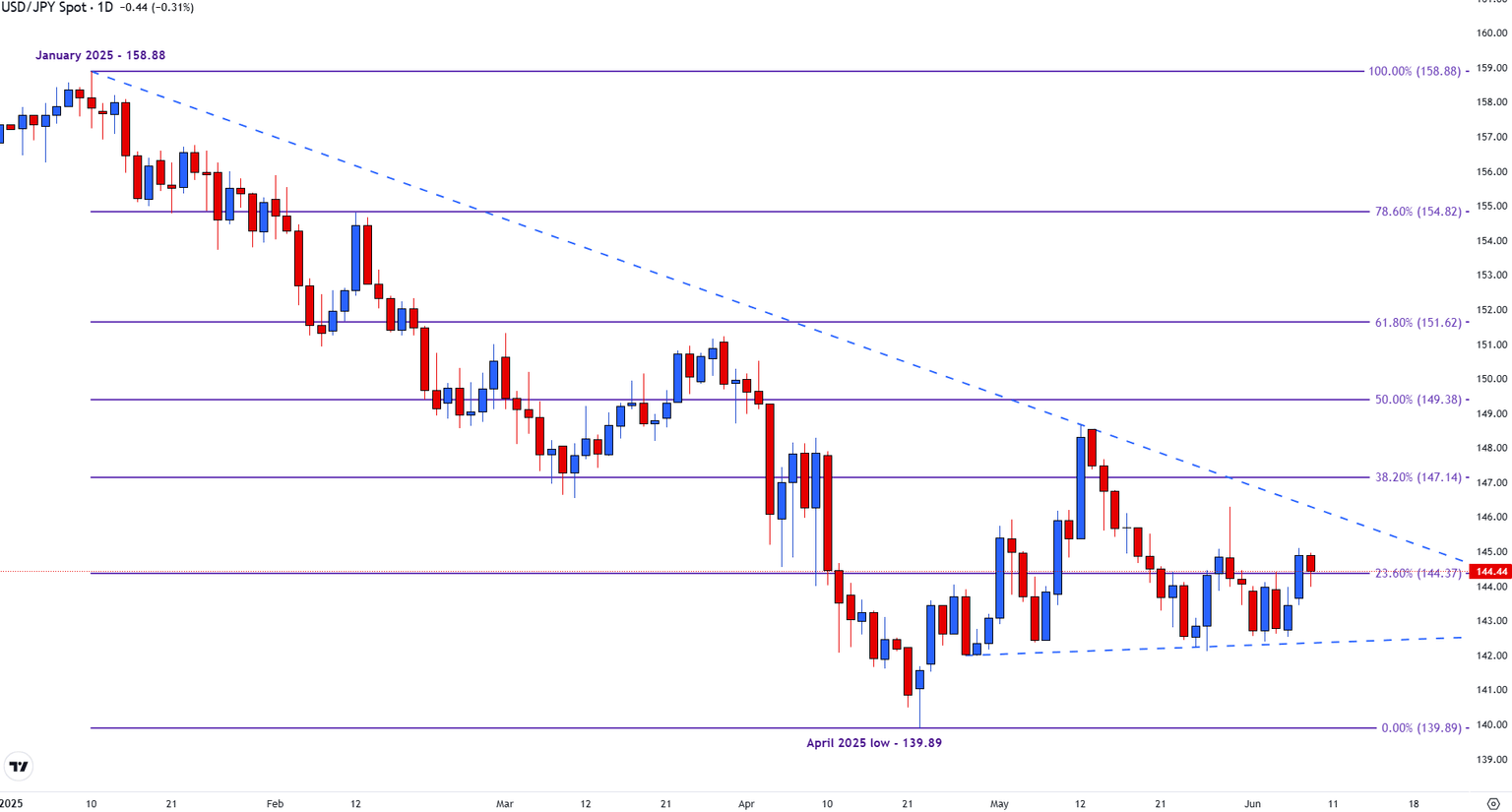USD/JPY trades cautiously as markets focus on US-China trade talks
- USD/JPY eases toward 144.00 as trade talks take center stage.
- The United States and China attempt to restore trade relations, benefiting risk sentiment.
- Japan makes progress with its own talks with the US, limiting the Yen’s decline.

The Japanese Yen (JPY) is steadying against the US Dollar (USD) on Monday, as markets digest developments in the US-China trade talks.
On Friday, Japan announced that it had made some progress of its own in talks with the United States (US), in the fifth round of trade talks between the two nations.
However, Monday’s focus was on the talks between the US and China in London, which remained the prominent driver of risk sentiment for equities and global currencies.
The latest news from London reported that US President Donald Trump was considering lifting export controls on certain goods from China in an effort to ease restrictions that have been placing pressure on US-China trade relations.
These developments had broader implications for risk sentiment and the USD/JPY pair. For the safe-haven Yen, a more risk-off tone is seen as a threat. However, since Japan is also extending its negotiations with the US, the downside for the JPY against the USD has been limited.
With USD/JPY currently trading above the 20-day Simple Moving Average (SMA) at 144.38, the psychological level of 144 remains critical for the near-term move.
With focus remaining on trade negotiations and broader risk sentiment, USD/JPY is expected to react to any developments related to international trade. If the US-China talks provide optimism regarding broader trade relations between the US and other trading partners, a shift in risk sentiment could favour demand for the US Dollar, adding additional pressure on USD/JPY price action.
For the immediate move, a break below the 20-day SMA may open the door for the 144.00 psychological support level, with the next critical layer of support resting at the May 27 low of 142.11.
In contrast, a clear hold above psychological resistance at 145.00 could see USD/JPY recover to the May 29 level of 146.29, with the next level of resistance at the 200-day Simple Moving Average (SMA), above 149.00.
USD/JPY daily chart

Japanese Yen FAQs
The Japanese Yen (JPY) is one of the world’s most traded currencies. Its value is broadly determined by the performance of the Japanese economy, but more specifically by the Bank of Japan’s policy, the differential between Japanese and US bond yields, or risk sentiment among traders, among other factors.
One of the Bank of Japan’s mandates is currency control, so its moves are key for the Yen. The BoJ has directly intervened in currency markets sometimes, generally to lower the value of the Yen, although it refrains from doing it often due to political concerns of its main trading partners. The BoJ ultra-loose monetary policy between 2013 and 2024 caused the Yen to depreciate against its main currency peers due to an increasing policy divergence between the Bank of Japan and other main central banks. More recently, the gradually unwinding of this ultra-loose policy has given some support to the Yen.
Over the last decade, the BoJ’s stance of sticking to ultra-loose monetary policy has led to a widening policy divergence with other central banks, particularly with the US Federal Reserve. This supported a widening of the differential between the 10-year US and Japanese bonds, which favored the US Dollar against the Japanese Yen. The BoJ decision in 2024 to gradually abandon the ultra-loose policy, coupled with interest-rate cuts in other major central banks, is narrowing this differential.
The Japanese Yen is often seen as a safe-haven investment. This means that in times of market stress, investors are more likely to put their money in the Japanese currency due to its supposed reliability and stability. Turbulent times are likely to strengthen the Yen’s value against other currencies seen as more risky to invest in.
Author

Tammy Da Costa, CFTe®
FXStreet
Tammy is an economist and market analyst with a deep passion for financial markets, particularly commodities and geopolitics.

















